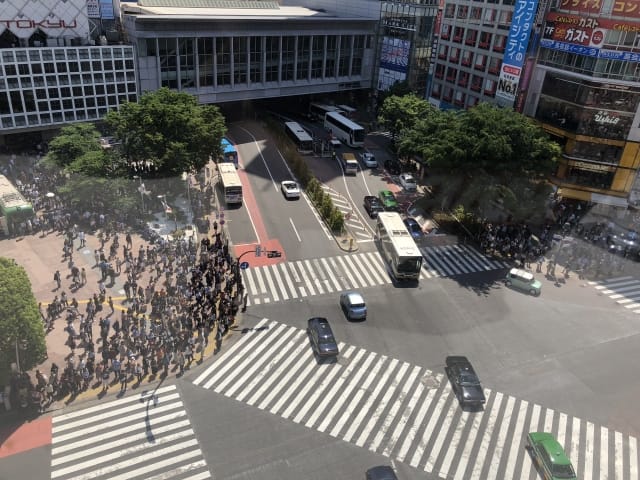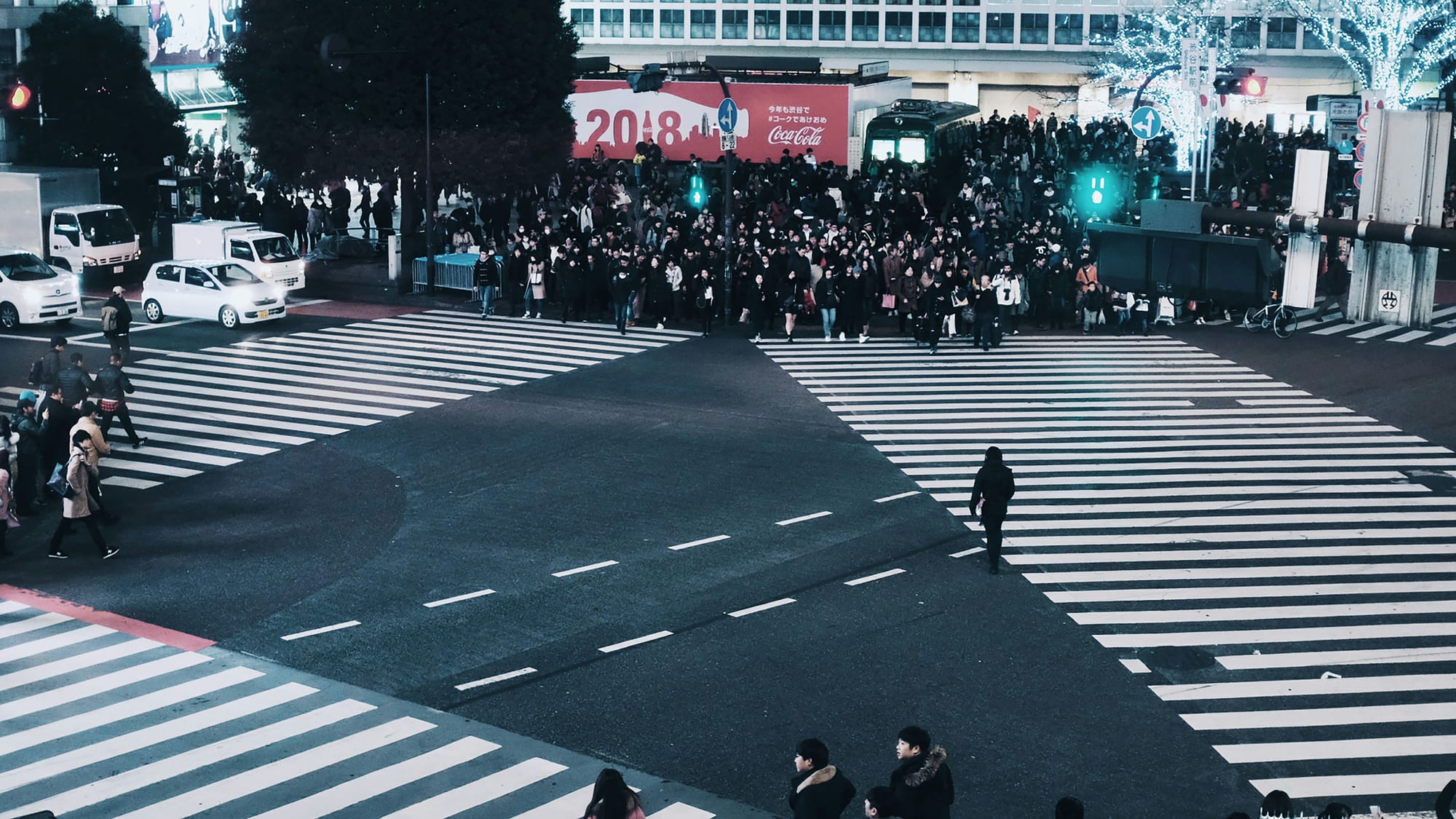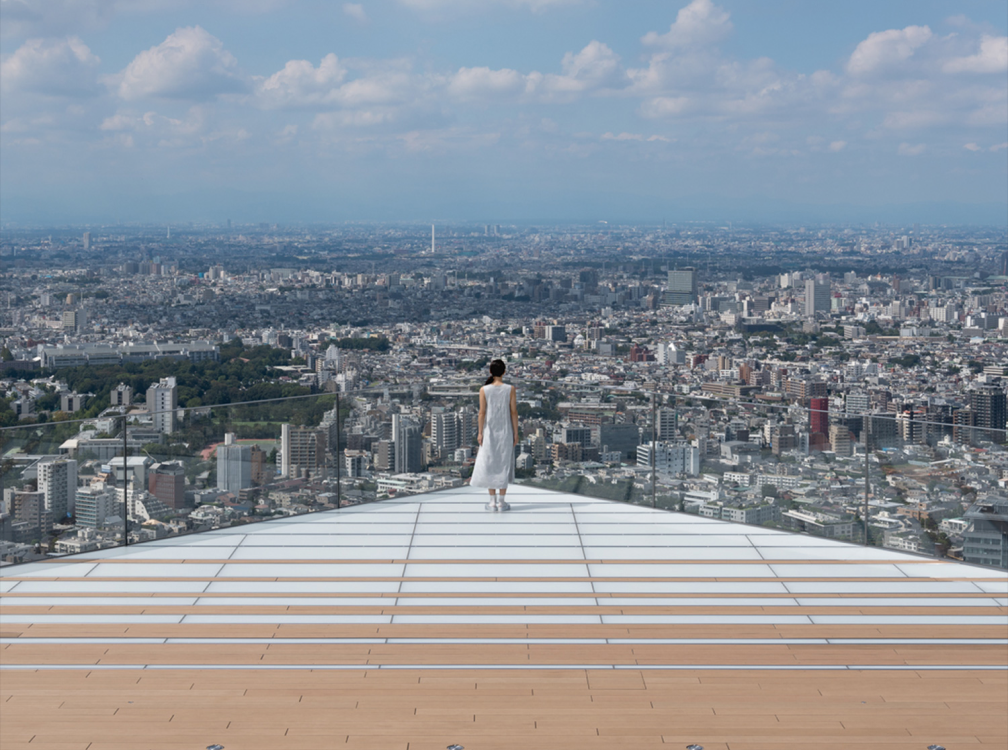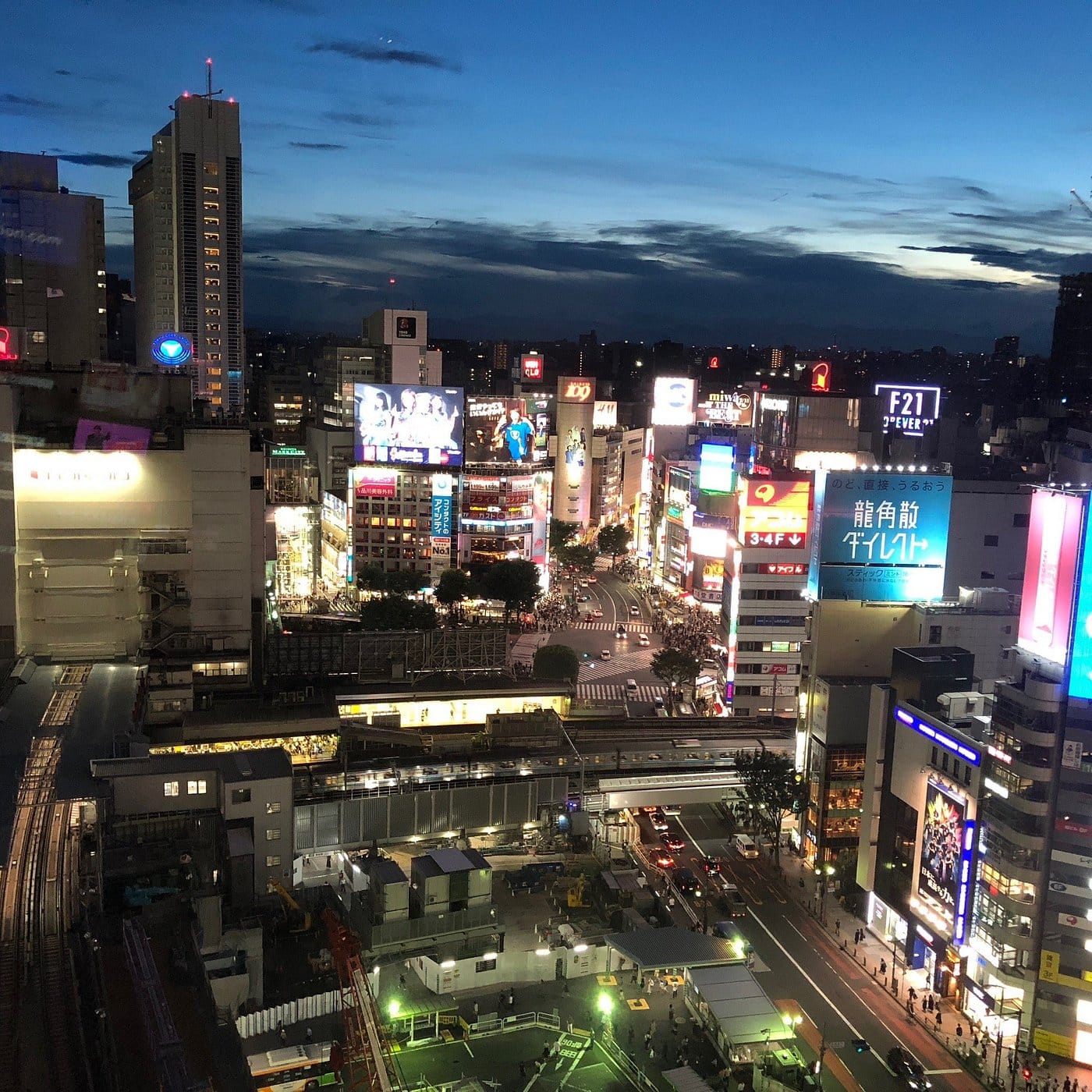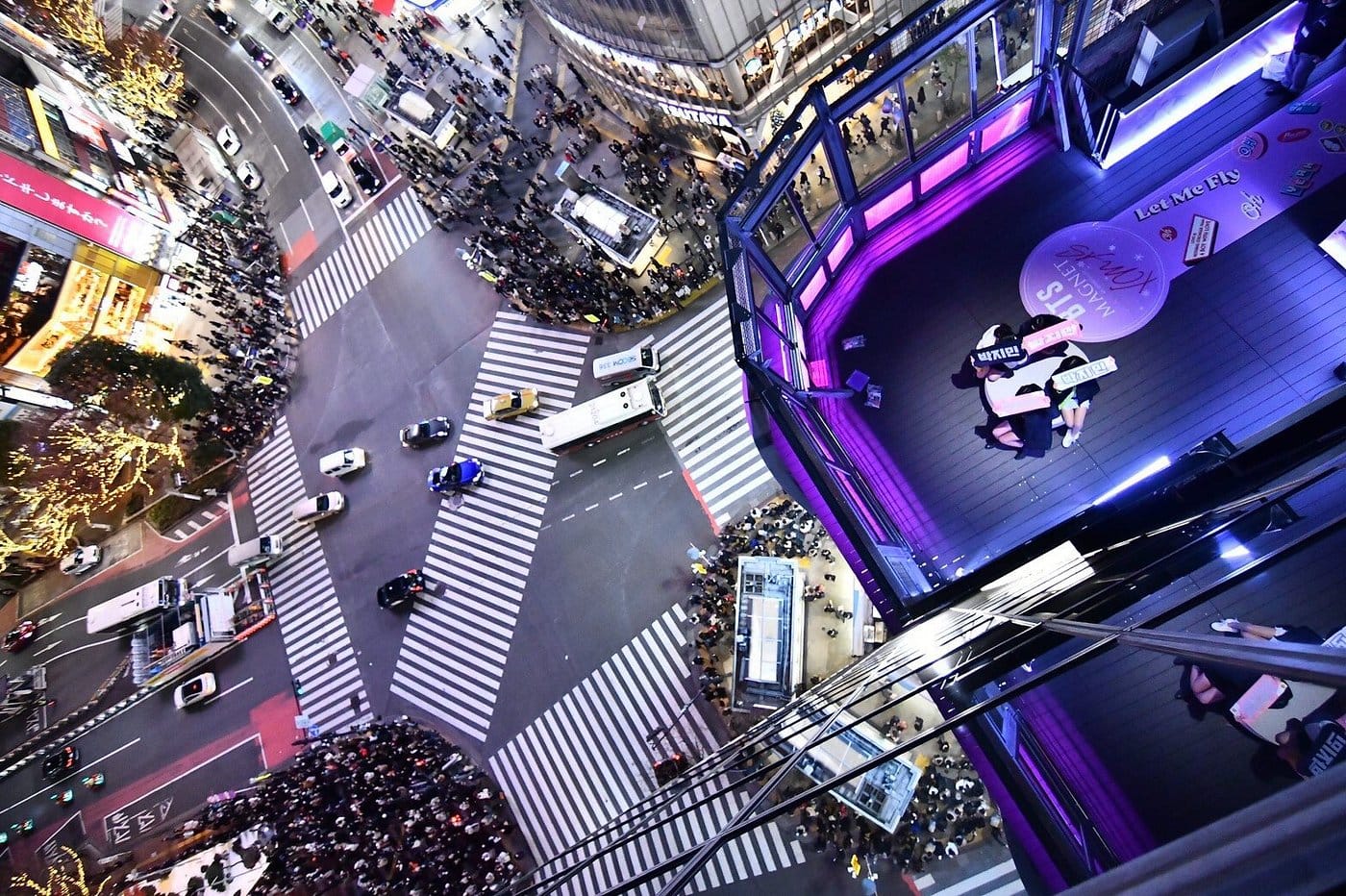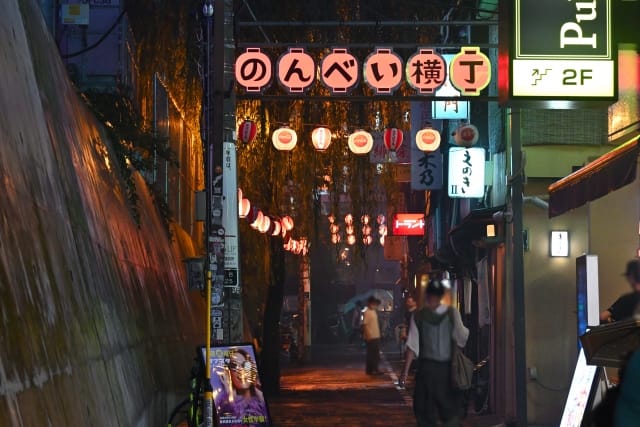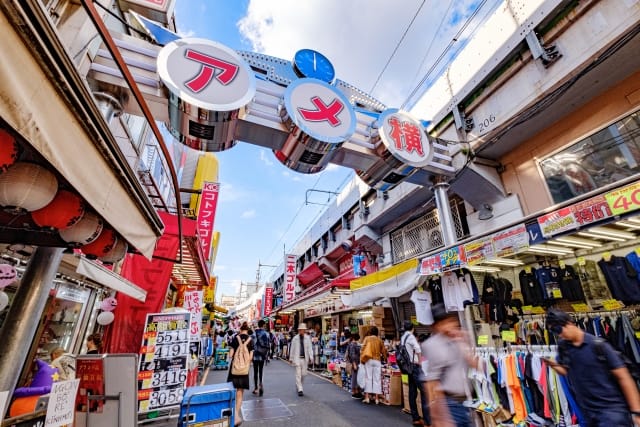The Icons of Shibuya: Scramble Crossing and Hachiko Statue
Since moving to a Shibuya city in 2024, I've been discovering many spots I
proudly recommend to tourists. I updated this article in January 2025 to incorporate my findings from this research, along with the latest information for 2025.
Another reason for updating the article is the growing interest in tours that allow visitors to safely and deeply experience Shibuya's nightlife. Because Shibuya is a city that continues to develop at a dizzying pace and in complex ways, tourists visiting for the first time find it extremely difficult to discover the truly excellent spots beloved by locals.
This is why food tours led by knowledgeable local guides who know Shibuya inside and out have been gaining popularity, as they take visitors through Shibuya's maze of izakaya establishments.
In fact, Magical Trip's tour, which ranked #1 among all tours on Tripadvisor, has been receiving numerous applications.

If you want to experience authentic izakayas beloved by Shibuya locals, try the "Shibuya Bar Hopping Night Tour in Tokyo," which is ranked #2 on Magical Trip. A knowledgeable local guide who knows Shibuya inside and out will take you to spots where you can enjoy genuine Japanese cuisine.
And if you want to make the most of Tokyo's nightlife, you absolutely must join the "Tokyo Bar Hopping Night Tour in Shinjuku," which is rated #1 on Tripadvisor. You can safely explore Shinjuku's historic retro drinking districts and Kabukicho, the largest entertainment district in Asia, with an expert guide who knows Shinjuku thoroughly.
We hope you'll have a wonderful time experiencing everything Shibuya has to offer by joining a Magical Trip tour!
Introduction
Shibuya, one of Tokyo's major commercial districts, is also known as the epicenter of Japanese youth culture.
During the day, it's bustling with shoppers, while at night, numerous people gather at izakayas and bars. It's also popular as a hub for art and music, offering plenty of entertainment options such as art galleries, live music venues, and nightclubs. With so many ways to enjoy yourself, you're unlikely to get bored even after spending a whole day here.
Moreover, Shibuya is undergoing redevelopment as part of a major Tokyo project, with high-rise buildings being constructed one after another to serve as key locations for tourism and shopping.
Shibuya is truly representative of Tokyo in both name and reality, and its landmarks are undoubtedly the Scramble Crossing and the Hachiko statue. In this article, I, who have been frequenting Shibuya since my teens, will provide a detailed introduction to these landmarks. Please use this information as a reference for access and recommended viewing spots.]
If you are interested in explore Tokyo's trendy culture, check the article below! I summarize how and where you can enjoy them as much as possible.
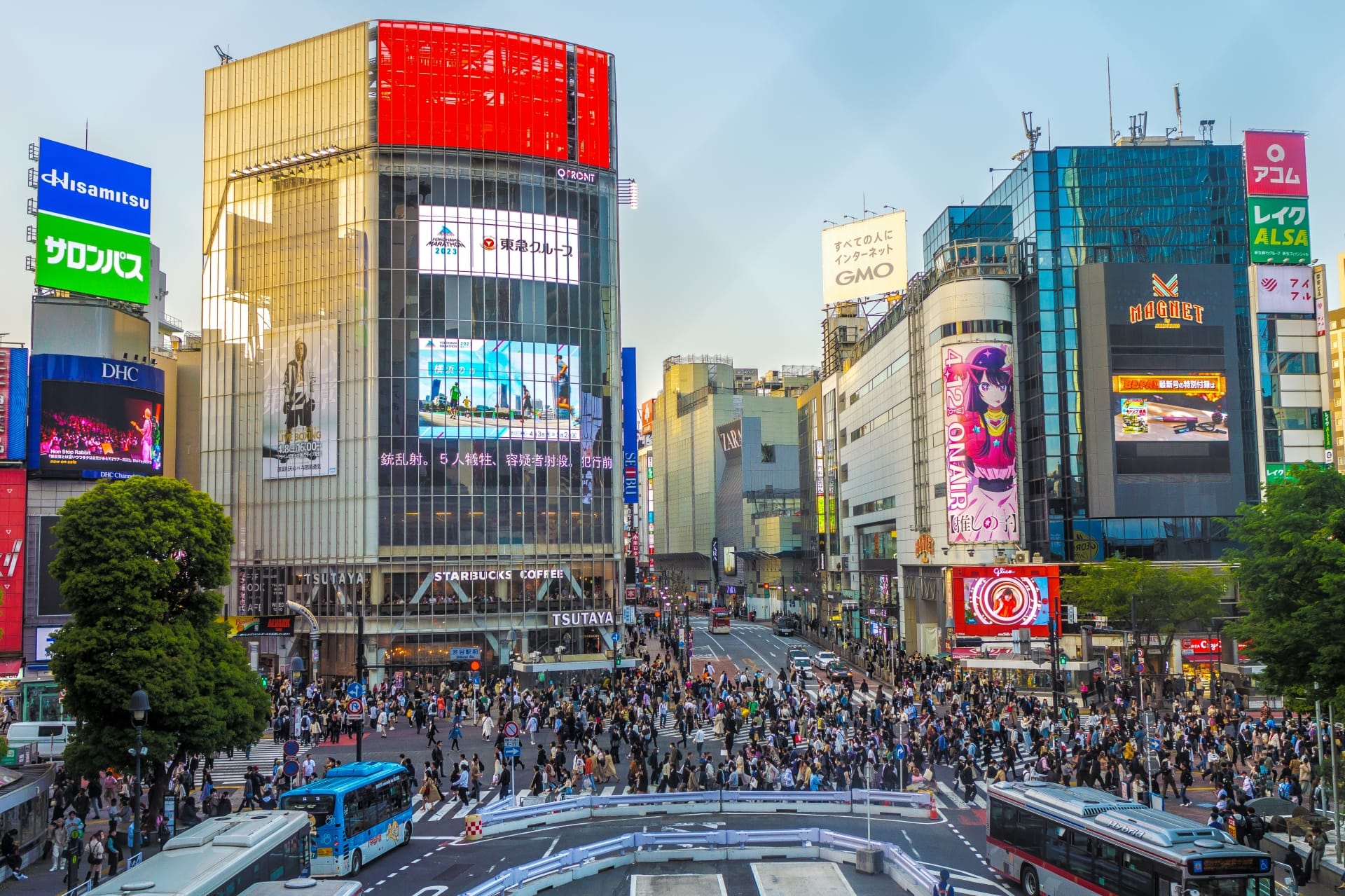
If you are interested in Photo Spots in Shibuya, check the article below! I summarized in more details and how I felt there.
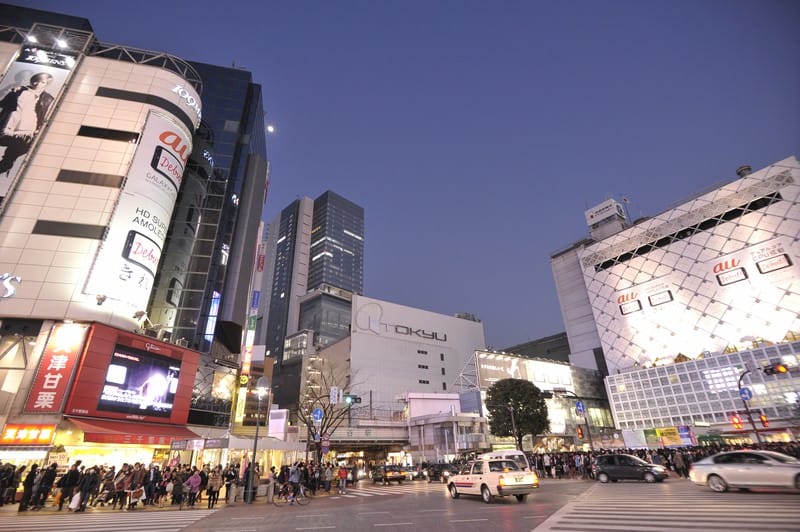
What is Shibuya Scramble Crossing?
The Shibuya Scramble Crossing is an intersection of 10 lanes located right outside JR Shibuya Station. When the traffic light turns green, 1,000 to 2,000 people cross the intersection at once, using five pedestrian crossings. It's said to be the busiest intersection in the world and is an iconic landmark symbolizing Shibuya.
The Scramble Crossing in Shibuya was established in the 1970s. From this time, Shibuya began to generate various cultures as a "gathering place for young people". By the late 90s, Shibuya had gained worldwide recognition, attracting tourists from overseas.
Entering the 21st century, the popularity of Shibuya and the Scramble Crossing as a symbolic scene of Shibuya further increased due to the influence of anime and the internet. The Shibuya Halloween gathering, popular among young people, also became famous through social media. With the increase in visitors to Japan, the Scramble Crossing has become an iconic spot that tourists must visit.
Access to Shibuya Scramble Crossing
When you get off at JR Shibuya Station and exit through the Hachiko Exit, you'll find Hachiko Square with the Hachiko statue. Even if you use other lines such as the subway, first aim for the Hachiko Exit Square. With your back to the Hachiko statue, walk straight through the square, and you'll immediately reach the Scramble Crossing.
Although several districts are adjacent to this area, the address of the Scramble Crossing is "2 Chome Dogenzaka, Shibuya City, Tokyo". From Hachiko Square, if you go left at the Scramble Crossing, you'll reach the Dogenzaka area where Shibuya 109 is located. Going straight ahead, you'll see the Q-FRONT building with Starbucks, which is in the Udagawacho area. If you go right, you'll reach the Jinnan-cho area where the MAGNET by SHIBUYA 109 building is located.
How to Enjoy Shibuya Scramble Crossing
Crossing it
When you arrive at the Scramble Crossing, first try crossing it once. Experiencing it is completely different from just watching.
If it's your first time, you'll likely be overwhelmed by the sheer number of people. Even I was anxious about whether I could cross safely when I first did it as a child.
However, there's no need to be afraid. If you walk with the flow of people, you'll cross before you know it. As traffic rules are expected to be strictly followed in Japan, please make sure to finish crossing quickly when the green light starts flashing.
While you'll be fine if you go with the flow of people, the area from the front of Shibuya Station to the Scramble Crossing has an incredibly high population density. Be sure to look around carefully to avoid bumping into people.
Take Photos
Since you've come to the busiest intersection in the world, why not try taking some photos? First, the station side where the Hachiko statue is located is the most crowded part of the intersection. It's recommended to cross to either the Q-FRONT side, Dogenzaka side, or Jinnan-cho side before taking photos.
Even if the light is green, taking photos in the middle of the crowded intersection is very dangerous. You'll bump into people as they come continuously, and it's considered a public nuisance as it obstructs pedestrian traffic.
Also, even if you're on the sidewalk, during the green light, a large number of people will be crossing the intersection from all directions. It's not a calm environment for taking photos.
The recommended method is to wait at the front of the sidewalk for the signal and take photos during the red light. Although time is limited, this is the most reliable way to take photos amidst the hustle and bustle.
View the Whole Scene from a High Place
Viewing from a high place allows you to see the entire Scramble Crossing at once. To enjoy the extremely crowded Scramble Crossing calmly, it's recommended to view it from a high place. There are three representative facilities where you can overlook the entire Scramble Crossing from above: SHIBUYA SKY, Shibuya Hikarie's Sky Lobby, and MAGNET by SHIBUYA 109's Crossing View & Rooftop Lounge Mag8.
Each of these places offers a different atmosphere due to their varying distances from the Scramble Crossing and heights. I've summarized the characteristics of each facility, recommended viewing times, and points to note. Please use this as a reference to enjoy the view and take photos.
SHIBUYA SKY
Source: Official website
SHIBUYA SKY is an observation facility on the 14th, 45th, 46th floors and rooftop of Shibuya Scramble Square.
Located right next to the Scramble Crossing, it's an excellent spot to look down on the crossing beautifully. With a 360-degree glass observation deck, you can see all of Tokyo's night views, making it unparalleled in terms of scenery.
As you'll be looking down from quite a high position, you can observe the overall view of the Scramble Crossing, including the surrounding buildings, from a bird's-eye view. It's beautiful both during the day and at night, but due to the height, the visible human figures are quite small. You can see the movement of people more clearly during the day.
One point to note is that there's an entrance fee of 2,200 yen. Also, as it's a very popular spot, make sure to make a reservation before going.
<Information>
・Address: 14th, 45th, 46th floors and rooftop, 2-24-12 Shibuya, Shibuya-ku, Tokyo
・Closed: January 1st (may have temporary closures)
・Phone number: 0342210229
・Opening hours: 10:00 AM - 10:30 PM
・Official website: https://www.shibuya-scramble-square.com/sky/
Sky Lobby
Source: TripAdvisor
Shibuya Hikarie is a high-rise building located right next to Shibuya Station. On the 11th floor, there's an observation lobby called the Sky Lobby.
You can get a panoramic view of Shibuya's buildings and scenery, including a clear view of the Scramble Crossing. As you can see Shibuya's night view is beautiful, nighttime is recommended. It's perfect if you want to see from a high place without spending money, as it's a free observation lobby open to everyone.
Personally, I also like the fact that it's open until midnight. The later it gets, the more otherworldly it feels, and I get a bit excited when entering.
One point to note is that it's located somewhat far from the intersection, so it might not be suitable if you want to see or take photos from directly above or at close range. It's recommended for when you want to see a slightly distant view.
<Information>
・Address: 11th floor, Shibuya Hikarie, 2-21-1 Shibuya, Shibuya-ku, Tokyo
・Closed: January 1st
・Phone number: 0354685892
・Opening hours: 7:00 AM - 12:00 AM
・Official website: https://www.hikarie.jp/floorguide/floormap/?floor=11f
Corissing View & Rooftop Lounge Mag8
Source: TripAdvisor
You can also view the Scramble Crossing from the 8th-floor rooftop of MAGNET by SHIBUYA 109.
As it's in a building right next to the Scramble Crossing, you can look down on the intersection from a much closer distance compared to other viewing spots. It's an observation space that you can enter by purchasing one drink for 600 yen.
The recommended time is at night. You can perfectly see the iconic scene of Shibuya's building lights, car lights, and passing people, like a video. Furthermore, I would recommend rainy days. The sight of a large number of people crossing with umbrellas in the rain has a different, wonderful atmosphere.
However, as it's an open-air rooftop space, be cautious on hot summer days under the scorching sun. Also, while you can enter the observation space on rainy days, umbrellas are not allowed, so you'll need a raincoat or similar.
<Information>
・Address: 1-23-10 Jinnan, Shibuya-ku, Tokyo
・Closed: Irregular closures due to weather conditions
・Phone number: 0334775111
・Opening hours: 11:00 AM - 9:00 PM
・Official website: https://magnetbyshibuya109.jp/
Hachiko Statue
Source: TripAdvisor
Along with the Shibuya Scramble Crossing, another landmark of Shibuya is the statue of the dog Hachiko in front of the station. It's known as the faithful dog that waited for years at Shibuya Station for its deceased owner.
Hachi, the model for the Hachiko statue, was an Akita dog born in 1923 in the Tohoku region of Japan. The following year, he was adopted by Hidesaburo Ueno, then a university professor in Tokyo, and began living in Shibuya.
Professor Ueno loved Hachi deeply, even eating meals together. Hachi started accompanying Ueno to Komaba Station or Shibuya Station every day when he went to university. Furthermore, he would also go to the station to greet Ueno when it was time for him to return home.
They were living happily together, but in 1925, Ueno suddenly passed away. Hachi was taken in by several different homes, but eventually returned to Shibuya Station where he used to see Ueno off and greet him, and began waiting for him.
Hachi's figure, waiting for his owner at Shibuya Station every day for years, became a topic of conversation, and in 1932, he was featured in newspapers, instantly becoming a famous dog.
In 1934, the Hachiko statue was erected in front of Shibuya Station. Hachi also participated in the unveiling ceremony. In 1935, Hachi passed away. The current Hachiko statue is the second generation, erected in 1948.
Where is the Hachiko Statue?
The Hachiko statue is located in Hachiko Square in front of JR Shibuya Station. It's used as a standard meeting place and landmark for people visiting Shibuya. I've had countless meetings at the Hachiko statue myself. The point is that it's easy for everyone to find and no one gets lost trying to reach it.
If you arrive at Shibuya Station using the JR line, exit through the gate marked "Hachiko Exit". As soon as you leave the station building, you'll be in Hachiko Square. The Hachiko statue is in the center of the square.
Even if you arrive in Shibuya using a train other than JR, you should quickly find a sign for the "Hachiko Square Exit". Head towards Hachiko Square with the JR station building, next to the Scramble Crossing.
The Scramble Crossing being treated as a landmark of Shibuya along with the Hachiko statue is actually a relatively recent development.
It's believed that the biggest factor was the spread overseas of the sight of a large number of people crossing at once as a symbolic scene of Japan, partly due to the influence of social media. Until the end of the 20th century, Shibuya was famous for landmarks such as the shopping building Shibuya 109 and Center Street, while the Scramble Crossing was just a passing point.
Influenced by tourists coming to see the Scramble Crossing, SHIBUYA SKY opened as a new attraction and instantly became a popular spot. Shibuya is a city that continues to change, but in the 21st century, it seems to be evolving by absorbing global stimuli. When you visit Tokyo, please enjoy exploring the Shibuya of that time to the fullest.
